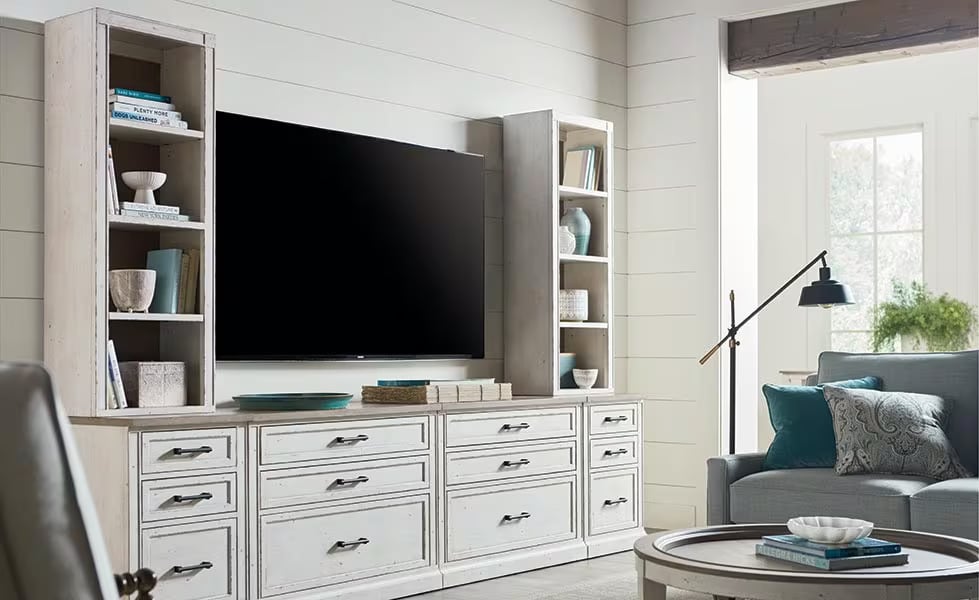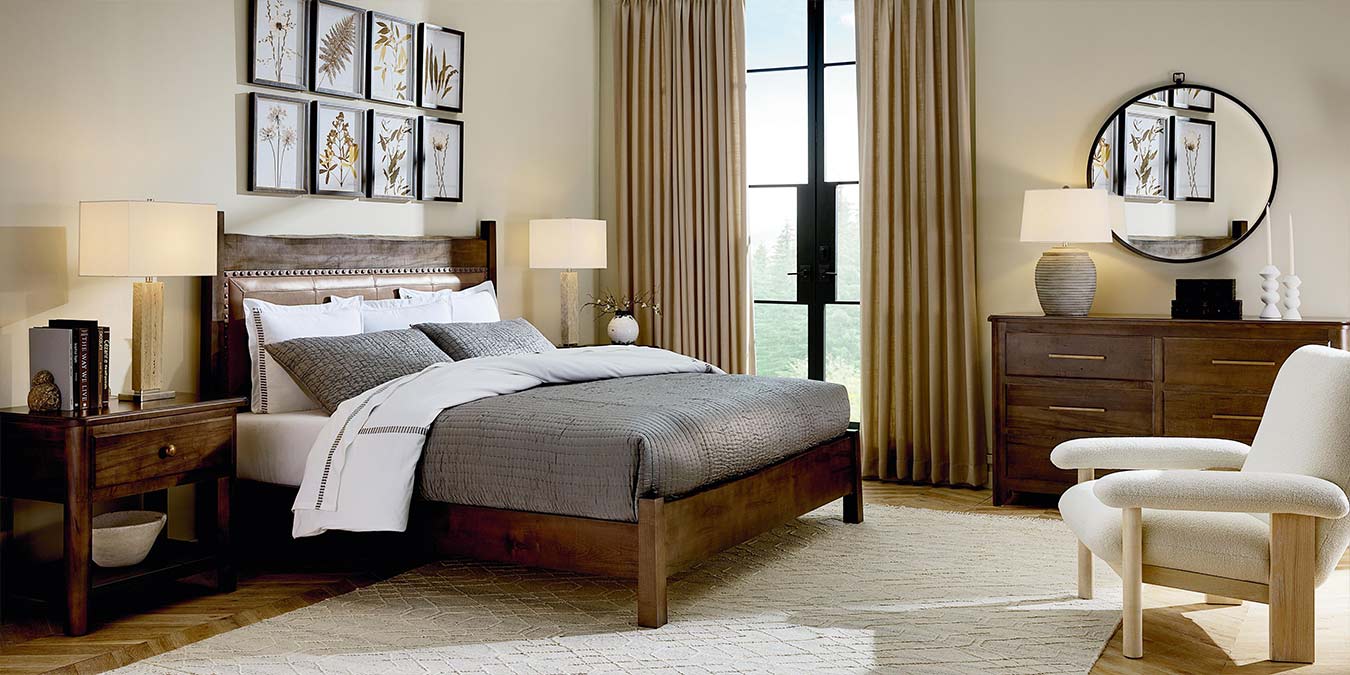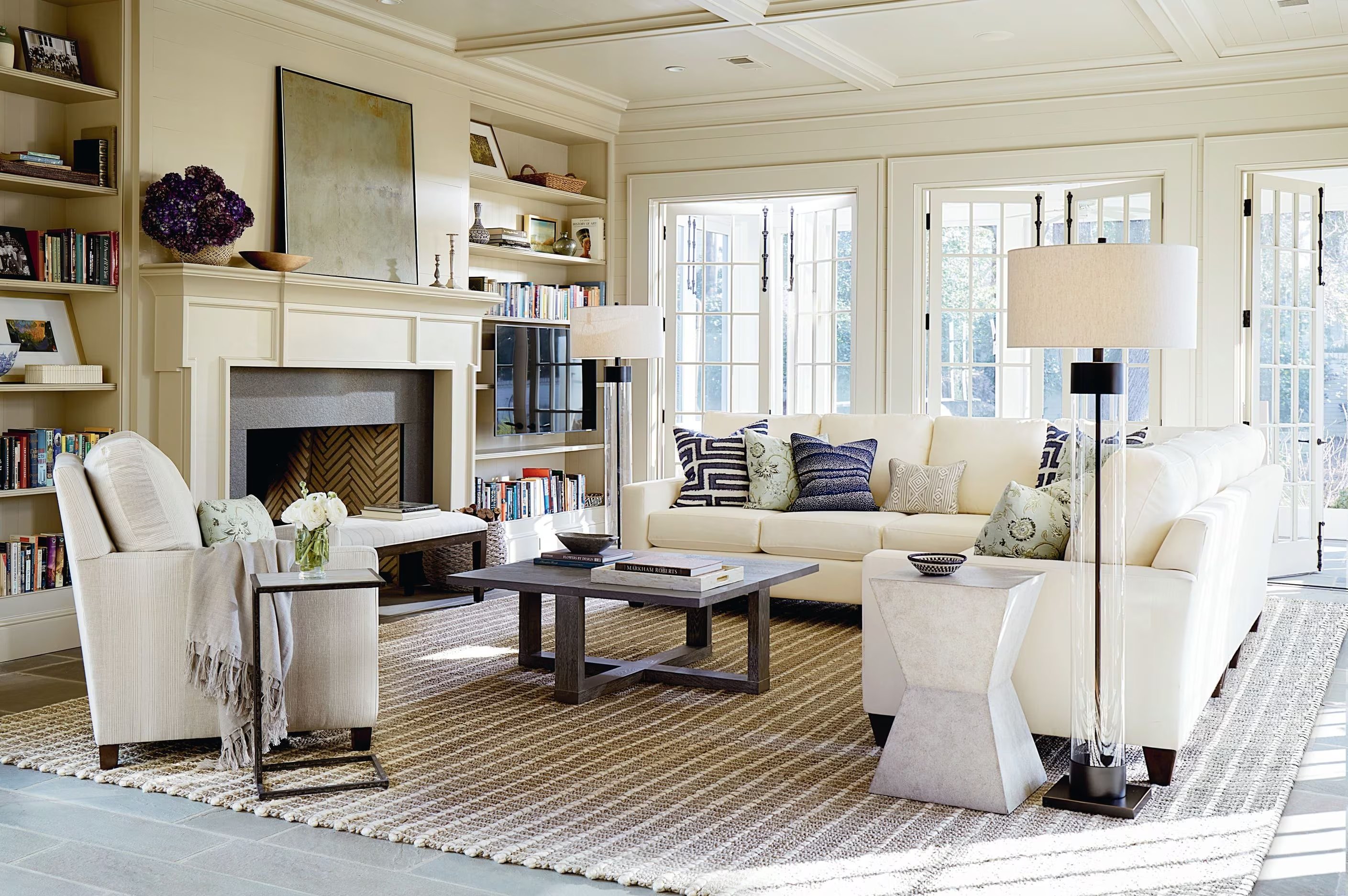Types of Fabrics for Sofas
Updated 9/19/22
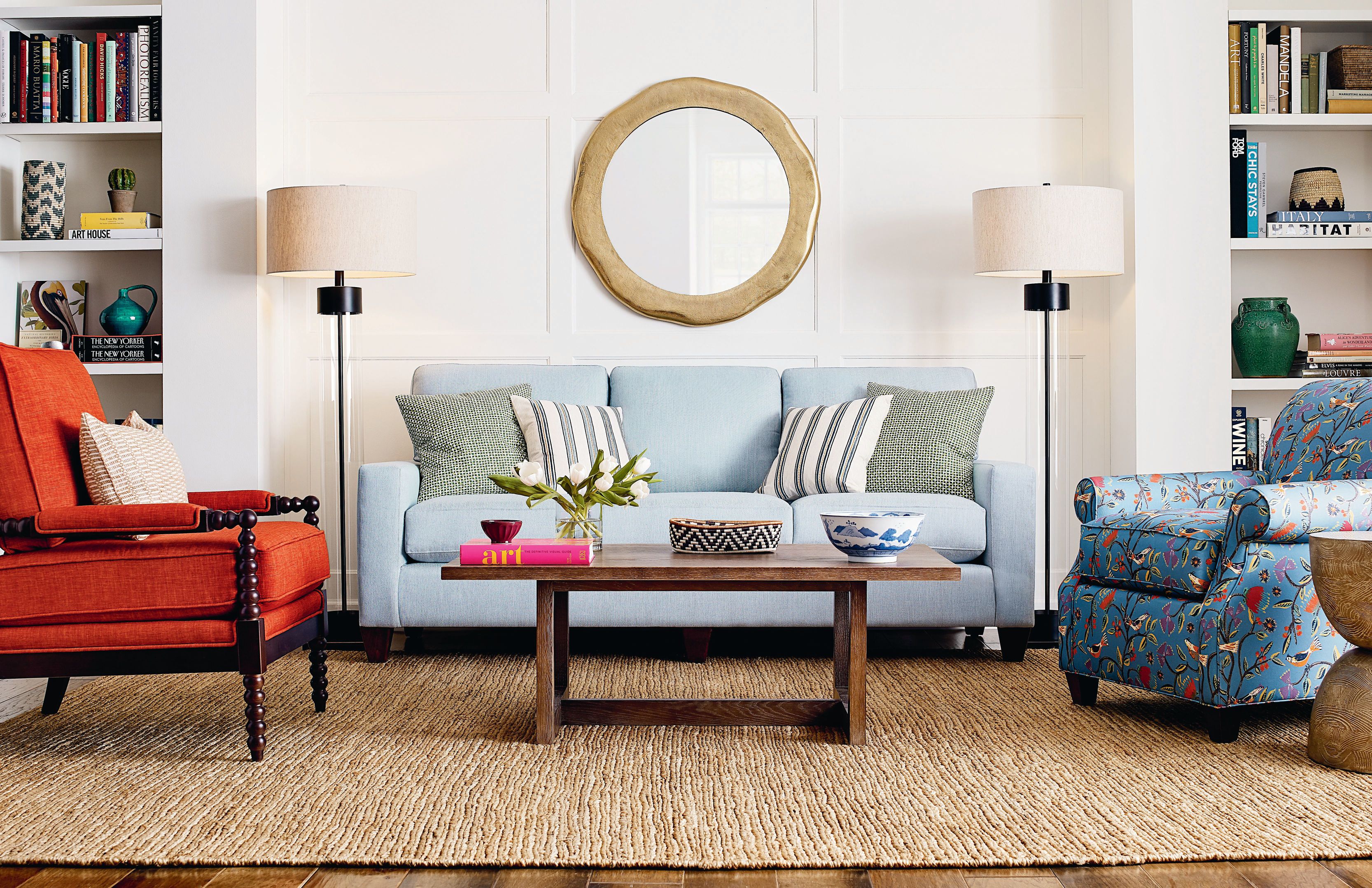
The best upholstery fabrics stand up to a lot of life. Think of cozy family movie nights wrapped up on sofa, or delightful dinner parties that go into extra courses. When you bring a new piece of furniture into your home, you may wonder how to choose upholstery fabric for your fabric couch that will fit your life.
Even though there are hundreds of fabrics to choose from, with a little background about fabrics, you can easily sort out the best upholstery fabrics for your home. In this guide to sofa fabric types, we'll look at the types of sofa fabrics and the best sofa fabric types for comfort, durability, and style.
Sofa fabric materials
Fabric for furniture upholstery like fabric sofas is made from natural or synthetic fibers, which are twisted into yarns and woven into fabric. The fiber affects appearance, hand (how the fabric feels), performance, and grade. Finer fibers can tend to be softer; thicker heavier fibers tend to be more sturdy and coarse and work well for fabric material sofas.
• Natural fibers like cotton and wool are usually shorter strands that are spun into longer filaments before being spun into yarn.
• Synthetic fibers – polyester, acrylic, nylon and polypropylene – are generally longer strands that are twisted into yarns for couch materials.
Many upholstery fabrics actually contain a blend of fibers. Blended fabrics take advantage of the characteristics of both natural and synthetic fibers for enhanced performance and aesthetics.
Having a general idea of the fabric content you prefer is a good start. When we think about how to choose upholstery fabric, it also helps to know the difference between a twill and a tweed, and which upholstery fabric types appeal to you.
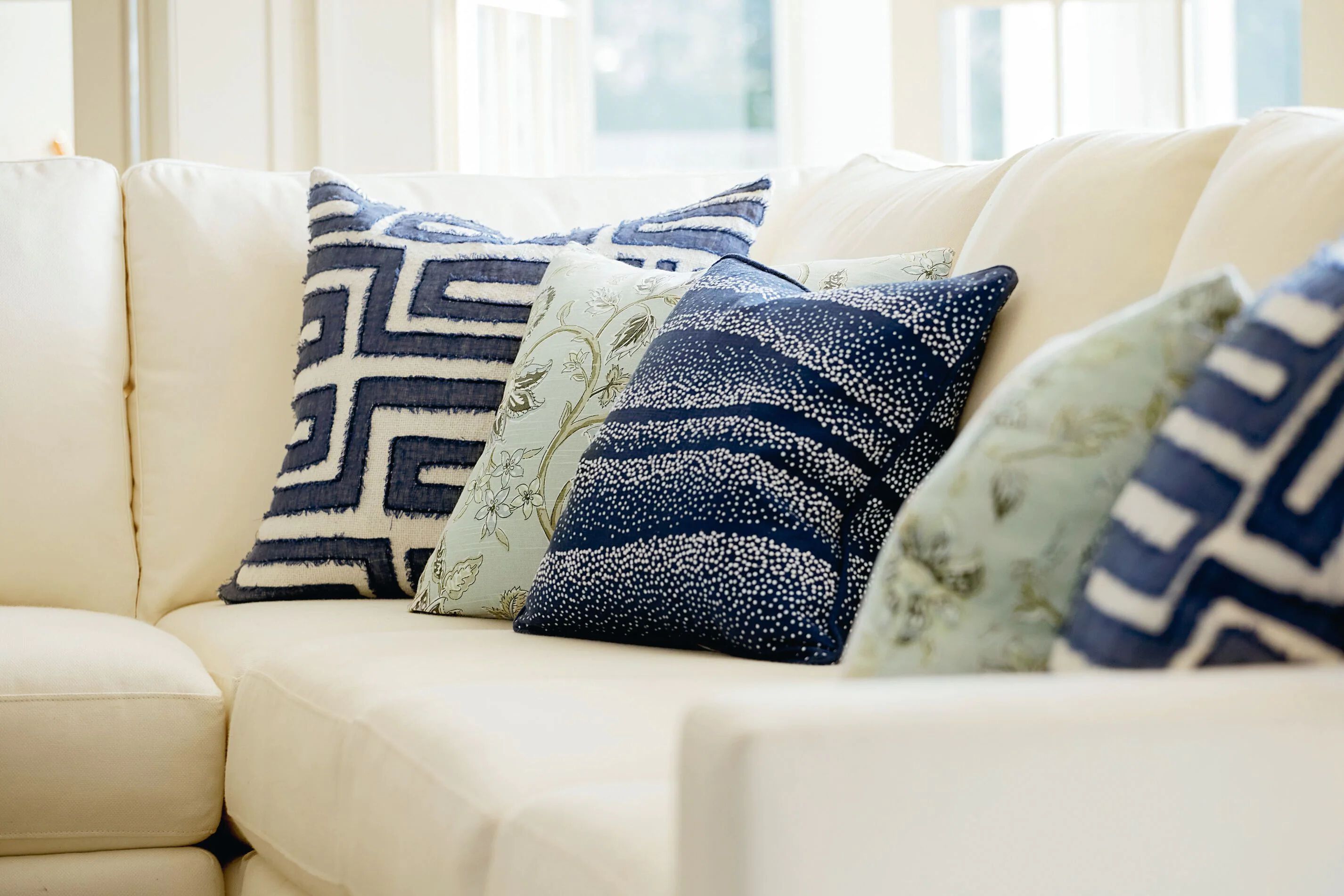
Sofa Fabric Types
One way to think of upholstery fabrics is to divide them into how the fabric is woven – flat weave or pile weave – and whether specially textured yarns are used. They can all be used for fabric for couches just depending on the type of sofa material that works best for you.
• Flatweave fabrics have yarns woven into a flat surface:
• Plain weave forms a simple criss‐cross pattern, such as canvas or washed cotton, linen, and linen blend.
• Twill weave is constructed by interlacing warp and filling yarns in a progressive alternation, which creates a diagonal effect and adds strength.
• Herringbone weave and basketweave are timeless weaves that add texture, pattern, strength, and durability.
• Jacquard (including damask and brocade) is loomed in a way that allows a pattern to be woven into the fabric, as opposed to being printed on top. As a result, the pattern will retain its appearance longer.
Pile weave fabrics are woven with yarns that protrude, which creates a loop, or are cut to create a pile.
• Velvet has cut loops, which creates a luxurious hand and a distinctive nap.
• Matelassé has a raised, or blistered/quilted surface, and often results in an embossed pattern on solid-colored fabrics.
Textured yarns include chenille, a soft yarn that combines beauty with durability, with a pile that sticks out on all sides like a caterpillar. Chenille has a nap, meaning it reflects light in different ways when you brush it in different directions.
Boucle yarn, on the other hand, has loops that range in size from large loose curls to tight little circlets, which adds dimension and depth to a fabric. Boucle can be dressed up or dressed down. Textured yarns make a fabric even more interesting, but the yarn loops can also make them a poor match for pets with claws.
Textured weaves like tweed and hopsack are created using yarn construction and weaving techniques.
Tweed has a wooly menswear vibe and often includes yarns of different colors, while hopsack is an open weave fabric that results in a classic nubby texture.
Things to consider when choosing a sofa fabric
When designing a room, you also want to think about pattern and color. Accent pillows often sport a fun texture or pop of color. Even beyond pillows, smaller pieces like accent chairs or ottomans give you an opportunity to add fabric with a striking pattern or a fun texture on a smaller scale.
On the other hand, the requirements are different when you’re looking for the best fabric for a sofa. “A sofa is a larger piece, so people want longevity,” according to John Delong, design consultant for Bassett Furniture in Atlanta. “People want more a more neutral fabric that they can live with for a long time.” Pillows are easy to change, but the best fabric for a sofa is long-lasting in both quality and style.
What are the best sofa fabrics?
When choosing material for furniture upholstery, keep in mind these important qualities of sofa fabrics:
• Fabric Durability. Durability refers to how the fabric stands up to abrasion from daily use and how it maintains its appearance.
• Repellency. Repellency is how liquids bead up on the surface and roll off, so they’re more easily wiped up and not absorbed into the surface.
• Stain Resistance. Stain-resistant fabric will prevent spills from permanently staining the fabric and allows for easy spot removal.
• Cleaning Instructions. Cleaning codes indicate the type of care fabric requires – water-based, solvent, or a combination.
• Fade Resistance. Fade resistance minimizes the loss of color by fabric exposure to sunlight (indirect sunlight or even artificial lighting).
• Fabric Grade. The fabric’s grade refers to its overall price when used to upholster a certain piece of furniture. Grade is affected by the fiber, the manufacturing process, and the pattern as well (since some patterns will result in more or less material waste during the upholstery process).
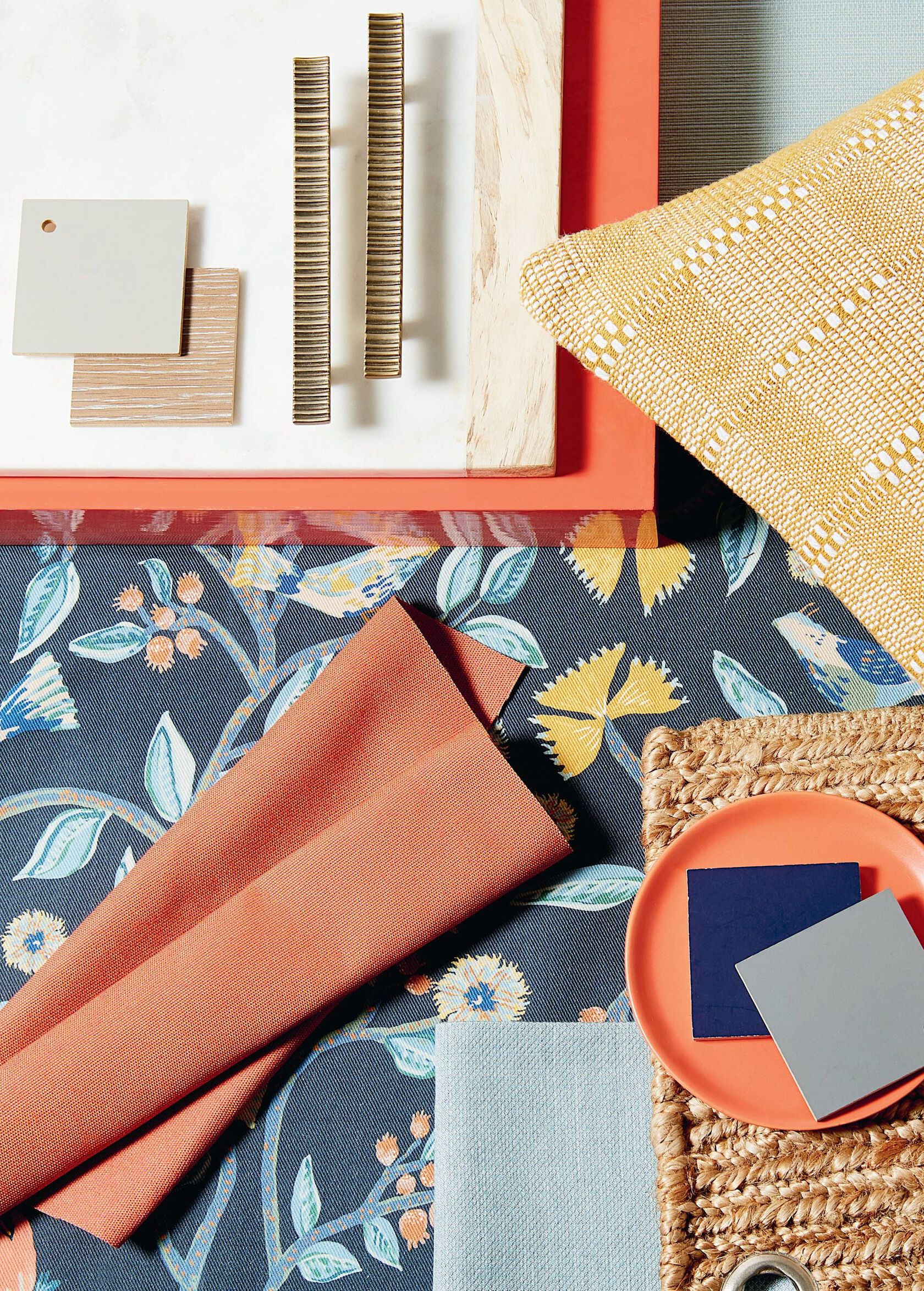
• Appearance. Appearance is more subjective. In this category, it's important to look at as many options as possible. Custom sofas allow for the most control over fabric appearance, as the custom fabric can fit any pattern or color combination imaginable.
• Hand. “Hand” means how the fabric feels.
Synthetic fabrics with cutting-edge engineering
Most of the qualities above are exemplified best in performance fabrics.
What exactly is a high-performance fabric? It’s a fabric that’s engineered to provide extra peace of mind and protection from stains as well as beauty, durability, and worry-free living. These fabrics are designed to last a long time, take a serious amount of wear, and look great doing it. The actual construction of performance fabrics varies, too. In many performance fabrics, a fiber is saturated with UV pigments during the spinning, knitting, or weaving processes. For others, the fabric undergoes an immersion treatment for a performance finish that adds a protective coating.
Top performance fabrics
Based on all these considerations, ask yourself the following questions:
“How do I intend to use this room?”
“What features are most important to me?"
With that in mind, below are several types of sofa fabrics that are engineered for a wide variety of needs, from comfort to durability and more:
Sunbrella: What makes the Sunbrella fabrics so sought-after is that they are stylish, comfortable, durable, stain-resistant, and easy to clean. They also offer UV and fade resistance as well as mold and mildew resistant properties. Sunbrella uses 100 percent acrylic fibers that have the color blended into the fiber during its liquid state, known as “solution-dyed”. This means the fibers have color all the way through - like a carrot. Other fibers have the dye applied after the fibers are formed - so the color is a coating, like a radish.
Revolution: Revolution fabrics are a great "green" option in the world of performance fabrics as they are not treated with chemicals. Olefin is dyed without the use of water and requires almost no land and water for production (see website for more detail). Instead, Revolution fabrics are woven in the USA using upcycled fibers – produced from what was formerly waste, providing the smallest carbon footprint of any upholstery fiber. Using an extrusion process, fibers are mixed with pigments and dyes before they are extruded, so that color goes all the way through each fiber. Along with being easy to clean, Revolution fabrics are also stained and fade resistant.
LiveSmart: LiveSmart fabrics combine performance fibers with performance finishes to make them durable and stain-resistant. Fabrics are protected from their center (like from our radish comparison above), making spills bead to the top and easy to wipe up.
Other top sofa fabrics
There are additional quality performance fabrics that achieve the range of aesthetics, performance and price points needed, depending on the assortment. These brands are respected by industry insiders, yet newer to the residential market, and not yet as recognizable. These include Flak Jacket, B Strong, and Regal Performance.
Poly/cotton Flak Jacket, B Strong, and poly/linen Regal Performance fabrics derive their protective properties primarily from immersion treatments that allow liquids to bead up on the surface for easy cleanability.
How do fabric sofas compare with leather?
Below are some ways fabric sofas compare with leather. For a more detailed comparison, check out this complete guide on all sofa materials.
Fabric
Fabric sofas and other performance fabric sofas are almost always going to have comfort, care, color and pattern options, and cost on its list of pros, where leather gets the nod for being inherently durable, luxuriously comfortable, hypoallergenic (pet dander, dust mites, and anti-other allergens can’t find a home here), and easy to maintain with simple dusting and a damp cloth.
Leather
The natural beauty of leather is a plus, and most leathers will fade somewhat with exposure to sunlight, and age gracefully, developing a fine patina. Also leather can show scratches more easily, but they can usually be buffed out. If you have a cat, just make sure you keep a few scratching posts nearby. Or look for a sofa made from already distressed leather. It won't show scratches as easily.
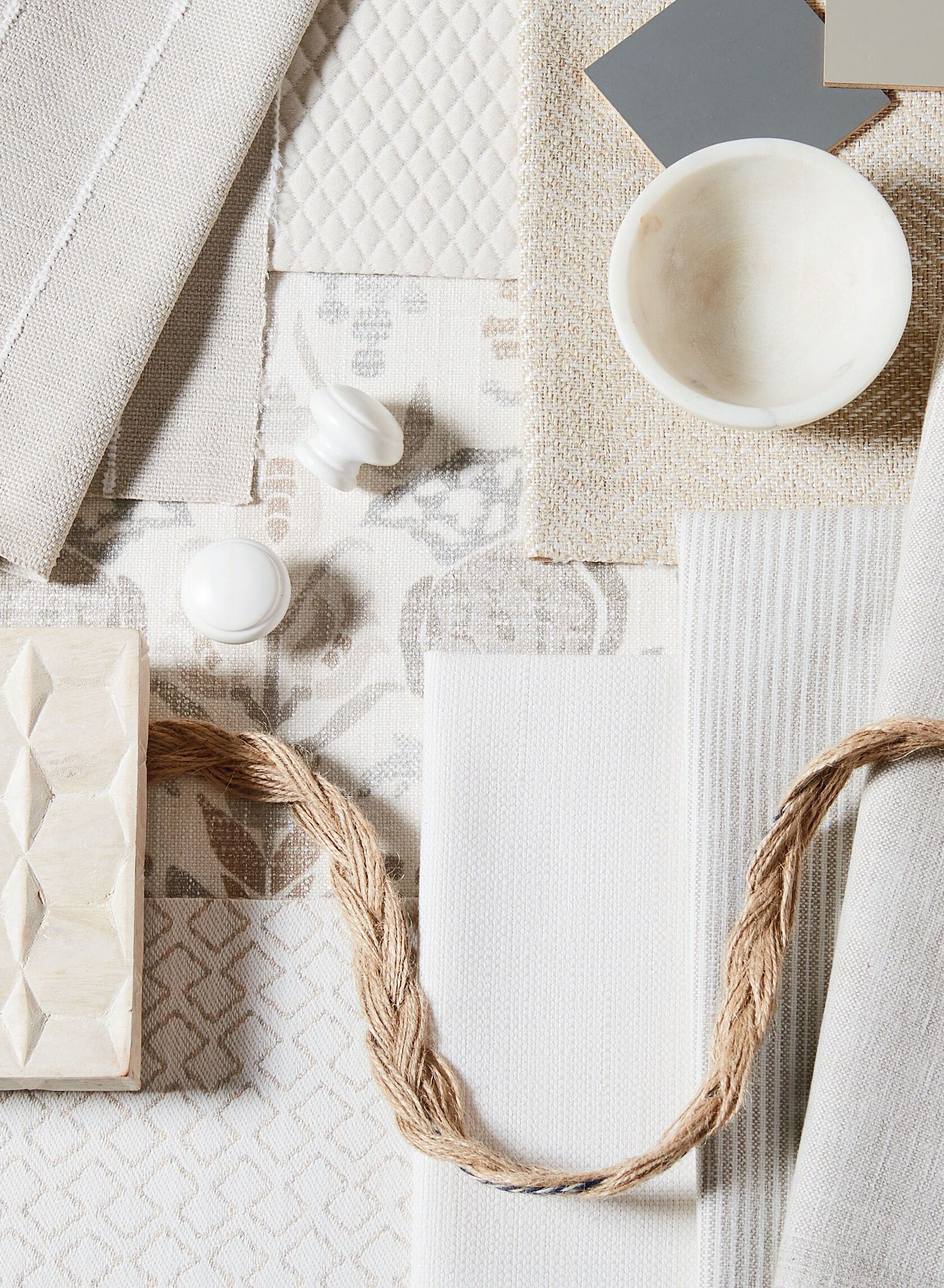
Bassett Furniture has over 800 fabrics to choose from
The key to choosing the best upholstery fabrics is that lifestyle dictates fabric selection. Consider how you live and who will use the piece; this will help guide you on the type of material to choose. You may love the look of that velvet, but it will quickly get destroyed in a house with kids or pets. Pieces in high-traffic areas, such as family or living rooms, will need durable fabrics, while furniture that doesn't get as much wear and tear, such as a bedroom chaise or headboard, can sport the wool or linen of your dreams.
If you’re drawn to a fabric that doesn’t quite fit your current lifestyle for one reason or another – the messy Doberman, or the newlywed budget – the broad Bassett Furniture fabric collection is sure to include a similar selection that offers a better fit. In the end, the best fabric for upholstery is one you love. Stop into a Bassett Furniture store today, or make an appointment to find a fabric you love.
